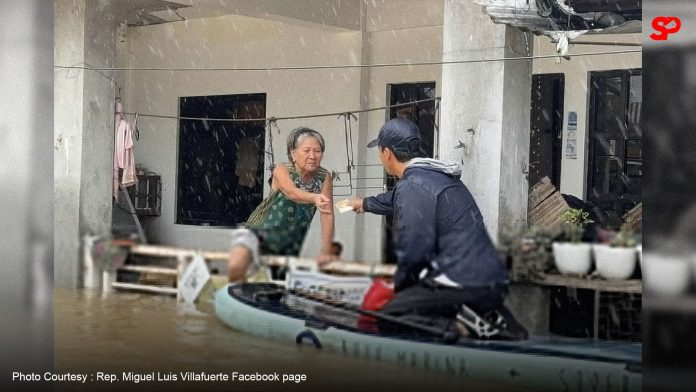By David Vera
Natural disasters have long been an unfortunate part of life in the Philippines, a country located along the so-called typhoon corridor, regularly in the path of the world’s most destructive cyclones. The resilience of Filipinos is often lauded as they consistently weather these storms, both literally and figuratively. Yet, for every Typhoon Yolanda or Typhoon Kristine that barrels through the archipelago, a more troubling human-made disaster looms, one that compounds the suffering brought on by nature – the failure of leadership.
As Typhoon Kristine drenched Camarines Sur, leaving towns submerged and residents huddled in evacuation centers, it became clear once again that while storms are unavoidable, the depth of their devastation is often preventable, or at least to a certain level, can be mitigated. Disaster preparedness, infrastructure, and response can significantly lessen the effects of natural disasters, but in the Philippines, these are often lacking, exposing a leadership deficit that is as dangerous as any typhoon.
The Philippines being no stranger to calamities, is in fact, among the most disaster-prone nations in the world, enduring an average of 20 typhoons annually, alongside earthquakes, volcanic eruptions, and flooding. In recent memory, Typhoon Yolanda (Haiyan) in 2013 left over 6, 000 dead.
Yet, a typhoon only becomes a disaster when compounded by human factors—such as insufficient disaster preparedness, inadequate infrastructure, and slow or inefficient response efforts.
In the case of Typhoon Kristine, Camarines Sur bore the brunt of flooding, with local villages underwater to this day. While evacuations were carried out ahead of time, many were still left vulnerable. The images of homes submerged up to their rooftops and families seeking refuge in evacuation centers point to a tragedy of poor planning and inadequate leadership.
Political Dynasty PH’s own calamity
Adding to the tragedy of natural disasters in the Philippines is the continued dominance of the already-entrenched political dynasties. In today’s internet trends, ‘Exhibit A’ would be the Villafuerte clan of Camarines Sur. They wield immense influence in their province, and consolidated power across generations. According to a study by the Ateneo School of Government, political dynasties have a stranglehold on the poorest provinces in the Philippines, including many that are most vulnerable to natural disasters. The report found that areas dominated by political dynasties tend to suffer from underdevelopment, weak governance, and poor disaster response.
As described by Alfred McCoy in his book Anarchy of Families, these dynasties operate on “patronage politics,” where public service becomes secondary to personal gain and power consolidation.
This brings us to the recent controversy surrounding the Villafuertes. As Typhoon Kristine devastated their province, Governor Luigi Villafuerte and his father, Representative LRay Villafuerte, were accused of being stranded in Siargao, as floodwaters rose in their home province. The Villafuertes however, denied such allegations, dismissing them as “fake news” propagated by political rivals.
Whether or not the Villafuertes were physically present during the storm, the fact remains: they were not in their home province preparing for the disaster. Instead of marshaling resources, coordinating with disaster response teams, and ensuring the safety of their constituents, the Villafuertes were enjoying the Siargao sun in the days leading up to the storm. The optics of this situation are troubling, especially when viewed against the backdrop of the Villafuertes’ political dynasty in Camarines Sur—a province consistently ranked among the poorest in the country.
Natural calamities may be inevitable, but the human response to them is not. The suffering of Filipinos during typhoons like Kristine is not just a product of nature’s wrath—it is a consequence of failed leadership and a political system that prioritizes dynastic control over public service.
As we move forward, it is crucial for the Filipino electorate to hold their leaders accountable. Governance should not just be about responding to crises after they happen—it should be about preventing these crises from becoming disasters in the first place. This means investing in disaster risk reduction, infrastructure, preparedness efforts and in civil servants who will truly serve.
In the face of natural calamities, the Filipino people have always shown resilience. But enough with romanticizing resilience. For years, leaders have relied on the “resiliency” narrative to excuse the senseless suffering Filipinos endure during storms, earthquakes, fires—day after day. It’s time for resilience to meet real accountability. People’s strength must be matched by leaders’ responsibility.

